

Retail environments are tough. From the constant foot traffic of customers and staff to seasonal wear and tear, spills, and rolling loads, every surface in a retail space is subject to rigorous testing. That’s especially true for flooring. The ideal floor supports your brand image, keeps maintenance manageable, and most importantly, holds up under pressure.
Whether you’re a commercial interior designer specifying materials, a contractor sourcing performance-tested products, or a national brand seeking consistency across locations, this guide is for you. We’ll explore what makes a flooring product ideal for high-traffic retail applications, outline key material considerations, and offer long-tail keyword strategies to support your search and specification efforts.
Retail flooring isn’t just background; it sets the tone for the customer experience, impacting:
Designers and specifiers require a material that combines aesthetics and practicality, visually striking yet highly functional in real-world conditions.
1. Durability & Performance Ratings
In high-traffic retail areas, durability and safety depend on knowing key performance standards. For glazed porcelain, start by checking the PEI rating, which indicates how well a tile resists surface wear. If it is an unglazed porcelain, review the Deep Abrasion Resistance value. Then, assess its breaking strength; products rated at 400 pounds or above are better suited for retail settings, as they can withstand rolling loads and heavy equipment. In summary, keep these points in mind:
These criteria support smarter product selection by aligning technical performance with the real-world demands of retail environments.
Read more about Ceramic & Porcelain tile testing2. Slip Resistance and Safety
Retail environments are used by a wide range of people every day—children, older adults, and individuals with mobility challenges—so safety must be a core part of the flooring specification. The right surface helps reduce slip-and-fall risks, particularly in areas exposed to moisture or frequent cleaning. Look for materials that comply with ANSI A326.31, which evaluates slip resistance under both wet and dry conditions. For spaces that include ADA-compliant routes or public entrances, flooring should also offer appropriate transitions and surface textures to improve grip. In higher-risk zones such as building entries or near beverage stations, consider specifying tiles with a textured or structured finish to add extra traction where it matters most.
3. Aesthetic Versatility
Every brand expresses its identity through design, whether a big-box retailer, boutique storefront, grocery chain, or quick-service restaurant. Flooring plays a major role in that expression, and the right surface can enhance brand storytelling while supporting functional needs.
Pro tip: Lean into flexible visuals that enable location-specific designs without compromising brand consistency.
Porcelain tile is the gold standard for high-traffic retail for good reasons. Think of it as the retail workhorse.
| Pros: | Considerations: |
| Extremely durable | Heavier weight |
| Moisture- and stain-resistant | Upfront costs may be higher |
| Available in virtually any visual | Skilled installers for proper installation |
| Long lifecycle and low maintenance | |
| Fire-resistant and VOC-free |
Ideal for: Department stores, grocery stores, brand flagships, convenience retail, malls, restaurants, and more.
View durable porcelain tile for commercial retail flooringVinyl products offer realism and flexibility, especially for smaller boutiques or budget-conscious rollouts.
| Pros: | Considerations: |
| Resilient and comfortable underfoot | May scuff or dent more easily than porcelain |
| Quick to install and easy to replace | Lifespan is shorter in extreme traffic zones |
| Broad visuals (wood, stone, abstract) | Sustainability profile varies by manufacturer |
| Good slip resistance when properly specified |
Best used for: Specialty retail, pop-ups, fitting rooms, light retail zones
Commercial-grade LVT flooring for boutique retail spacesFor dramatic effect and minimal grout joints, gauged panels are ideal for modern, luxury-oriented retail design.
| Pros: | Considerations: |
| Large-scale visuals (up to 5′ ¼”x10′ ½”) | Requires trained installers |
| Thin profile minimizes weight | Upfront costs may be higher |
| Excellent durability and low maintenance | Specialized tools required |
| Ideal for wall-to-floor integration | Various thicknesses for different uses |
| Faster installation due to size |
Ideal for: Flagship stores, beauty and fashion brands, modern lifestyle retailers
Large format gauged porcelain slabs for retail environmentsStrategic use of color, material, and pattern can transform how customers move through a retail space. Thoughtful flooring choices can subtly guide circulation, define departments or product zones, and highlight promotional or seasonal areas; all while reinforcing the brand’s visual identity. Modular flooring systems or tile patterns are especially effective for shaping these pathways, helping direct customer behavior without relying on additional signage.


Certain areas within retail spaces require special attention regarding flooring performance. For example, entryways are exposed to outdoor elements and need surfaces that can handle moisture, dirt, and an increased risk of slipping. This makes textured finishes or integrated walk-off systems essential.
Choosing the right flooring product for these various areas ensures long-term performance and creates a seamless experience for users.
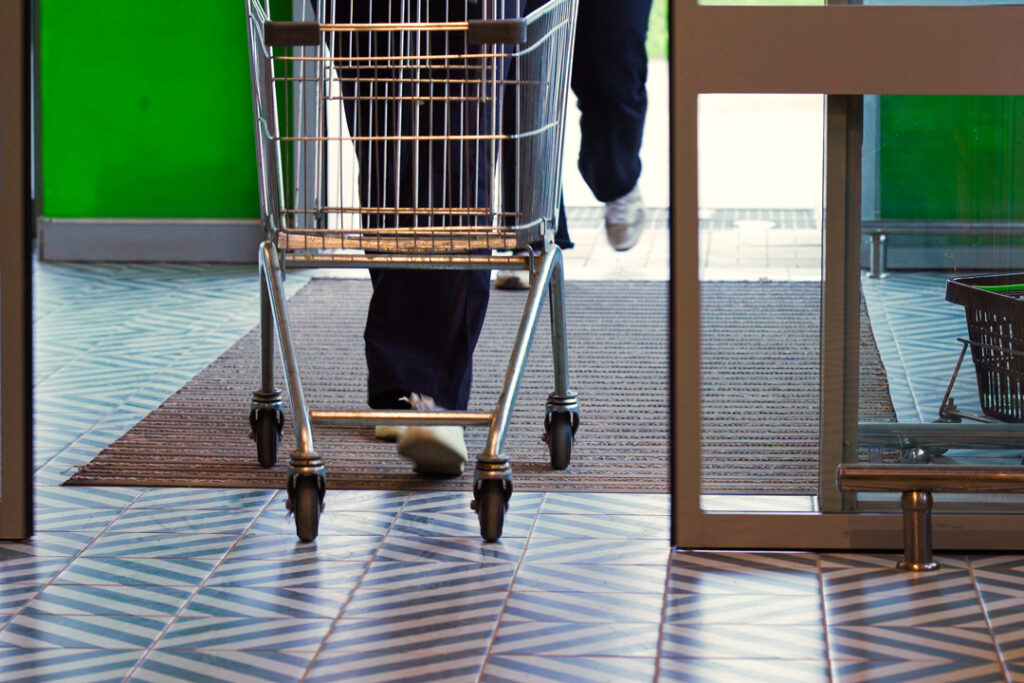
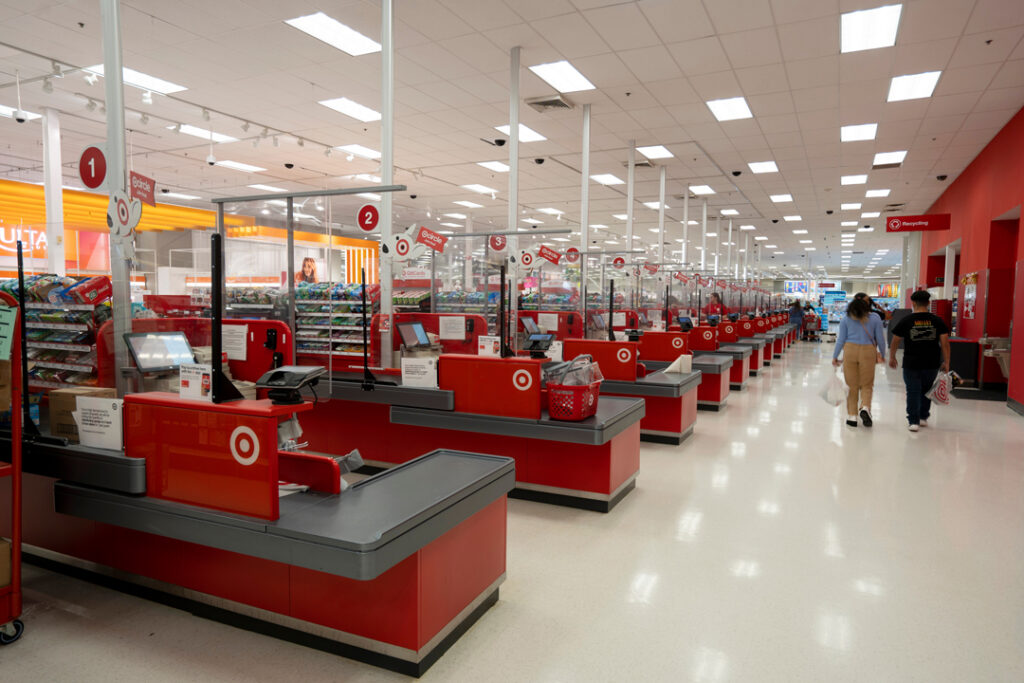
Retailers often seek noise reduction in large, open spaces. While hard surfaces reflect sound, combining tile with acoustic ceilings or rugs can solve this. For areas with long dwell times, consider rubber underlayment or hybrid flooring systems.
In retail environments, maintaining cleanliness is a top priority. Flooring must hold up against frequent challenges, including spill-prone areas like cafés and grocery stores, constant foot traffic, and rolling loads such as carts and stock equipment. Daily cleaning cycles, often involving disinfectants, add to the wear. Among available options, porcelain tile offers the highest level of stain resistance and long-term cleanability. Luxury vinyl tile (LVT) and resin flooring systems also perform well but may require more frequent maintenance. To preserve appearance and longevity, it’s best to avoid porous surfaces or high-gloss finishes in high-traffic zones, as they tend to show wear more quickly.
Maintain cleanliness with these maintenance guidesWhen specifying flooring for national brands—whether QSR, fitness, convenience, or lifestyle retail chains—the following considerations are paramount:
1. Consistency Across Locations
2. Supply Chain Efficiency
3. Life-Cycle Costing
Example: A porcelain wood-look tile installed across all locations of a national coffee brand offers consistency, aesthetics, and durability—even in high-spill areas.
When architects and commercial interior designers specify flooring for high-traffic retail spaces, performance is just one part of the puzzle. Equally important is how well the flooring supports the design narrative, elevates the end-user experience, and aligns with budget and brand standards. Considerations include:
For commercial contractors, reliable installation and product performance are critical while prioritizing:


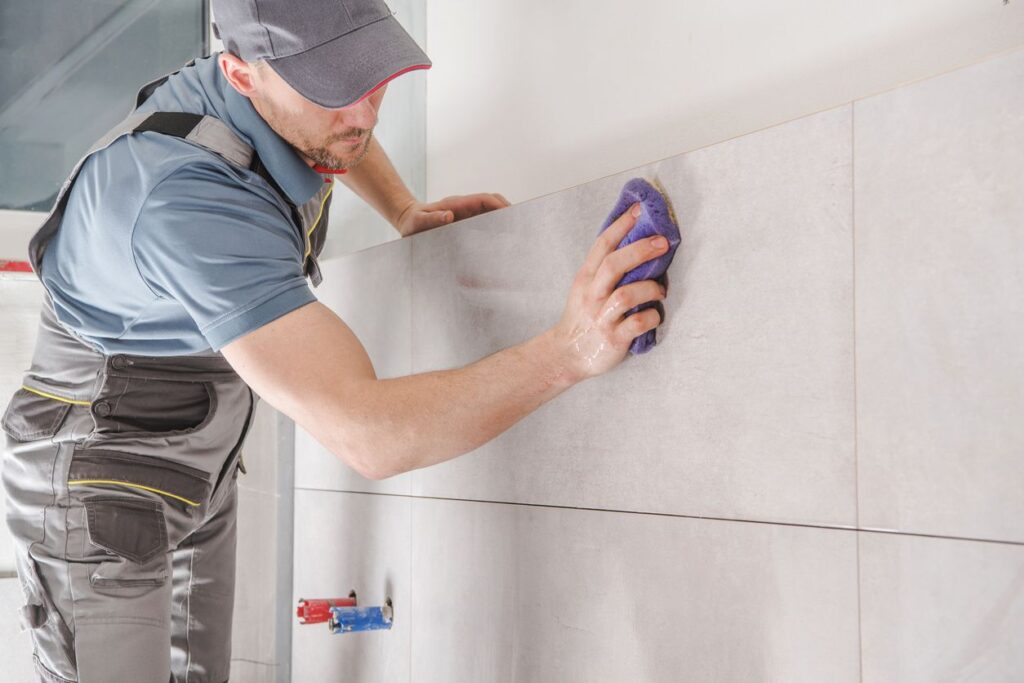
While trends evolve, certain principles remain relevant year after year:
Natural-Inspired Visuals: Retail designers are increasingly drawn to organic textures such as wood, stone, terrazzo, and concrete, as these materials provide warmth and a sense of familiarity.
Tone-on-Tone Palettes: Layered neutrals support flexible merchandising and subtle zoning.
Sustainable Materials: Low-VOC, recycled-content, and materials that contribute to LEED points are gaining traction.
Statement Surfaces: Photo-worthy moments are all the rage, and retail brands are embracing them through patterned tile, large-scale slabs, or 3D wall installations.
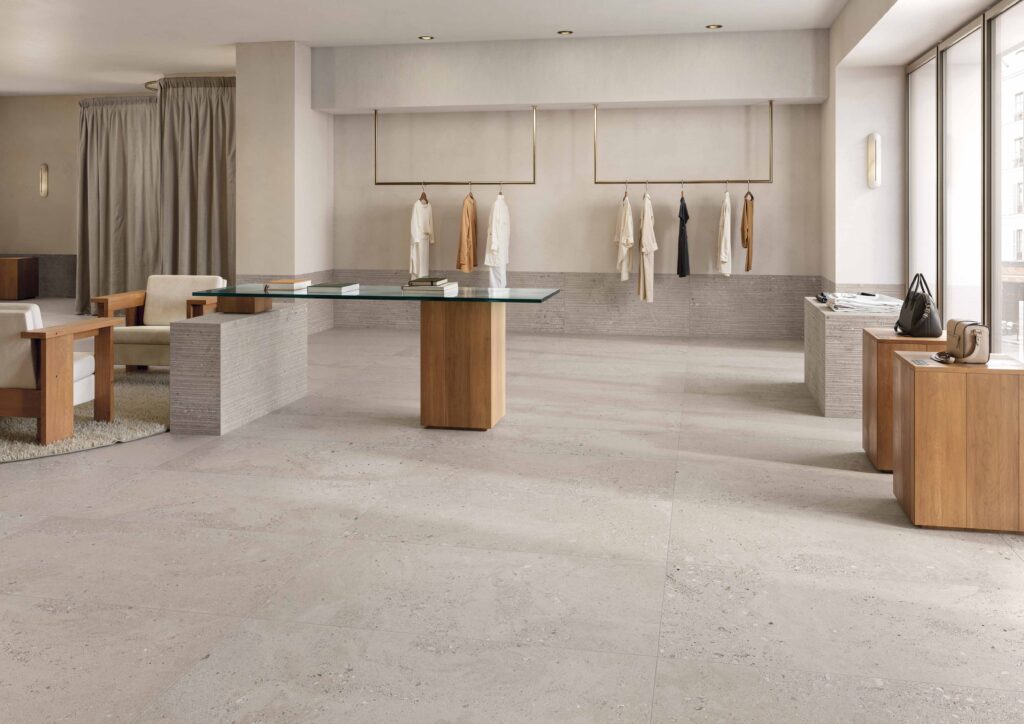
Porcelain tiles offer top durability, stain resistance, and design flexibility.
Porcelain has the longest lifespan.
Yes, many meet and exceed the ANSI A326.3 requirements of > 0.42 Dry.
Assess traffic, brand, safety, and budget. Reach out to the Creative Materials team for assistance.
In retail, flooring must be more than visually appealing; it must be resilient, safe, easy to clean, and aligned with the brand’s aesthetic. The most successful retail environments begin with high-performing materials that not only enhance aesthetics but also perform effectively behind the scenes.
By selecting products that are:
Every location, whether a one-off boutique or a nationwide chain, can have a robust foundation for success.
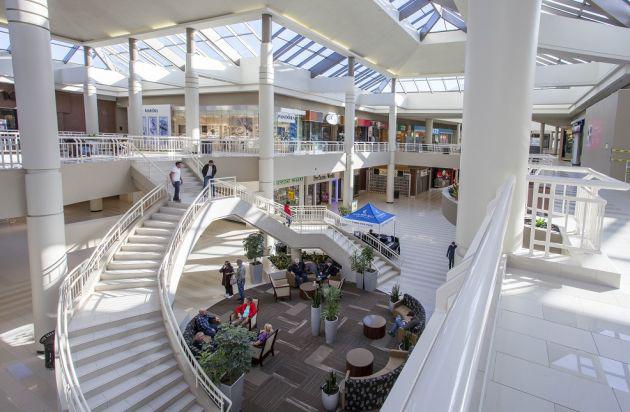
Explore how Creative Materials helped Pyramid Management Group2 reimagine the Galleria at Crystal Run with durable porcelain tile—blending performance, aesthetics, and long-term value in a high-traffic retail environment.
1 TCNA – A leader in the development of tile industry criteria for health and safety, sustainability, material and environmental transparency, international certification, and dozens of quality standards protecting consumers. https://tcnatile.com/
2 Pyramid Management Group is the largest privately held shopping mall developer in the Northeast, owning, leasing, and operating 9 shopping centers. https://www.pyramidmg.com/